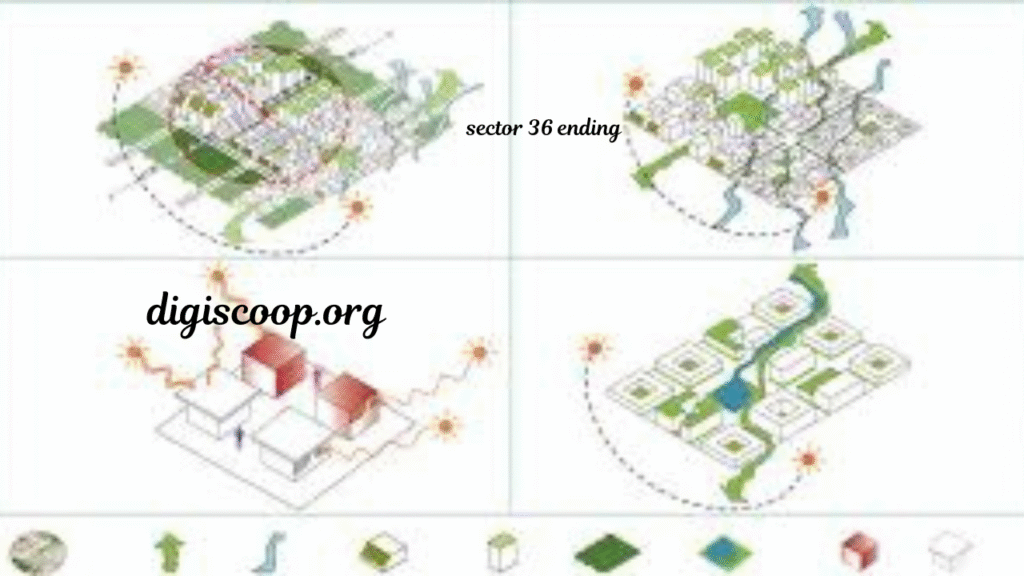The term sector 36 ending has sparked curiosity and questions in various circles, especially among those familiar with urban planning, real estate, and local geography discussions. But what exactly does sector 36 ending mean? Why has it become a topic of interest, and what implications does it hold for residents, investors, and visitors alike? This article dives deep into the concept, significance, and potential future of sector 36 ending to provide a clear and thorough understanding.
Understanding Sector 36: The Background

Before we explore sector 36 ending, it is crucial to understand what Sector 36 refers to in the first place. Sectors are often designated parts of cities or townships, marked for administrative, developmental, or planning purposes. Sector 36 typically represents a defined geographic area, often residential or commercial, within a larger urban layout.
In many cities around the world, sectors are part of planned urban development designed to organize infrastructure, housing, business areas, and public amenities systematically. Sector 36 might be a bustling locality with various facilities, roads, parks, and residential complexes.
What Does Sector 36 Ending Mean?

When people mention sector 36 ending, they are often referring to the outermost boundary or the terminal point of Sector 36. It could be the physical end of the sector’s developed area or the final stretch along a main road or highway passing through or bordering Sector 36.
The term “ending” in this context usually relates to:
- The geographic limit where Sector 36 transitions into another sector or undeveloped land.
- The concluding part of a residential or commercial layout within Sector 36.
- The point where infrastructure development such as roads, utilities, or public transport lines cease or are planned to end.
Understanding this helps clarify the ongoing discussions about sector 36 ending and its relevance to future urban planning and development.
The Significance of Sector 36 Ending in Urban Planning

The concept of an ending point for any sector, including Sector 36, is vital in urban planning for several reasons:
1. Infrastructure and Connectivity
The end of Sector 36 often marks a crucial point for transportation networks. Roads, public transit lines, and pedestrian pathways must efficiently connect at or beyond this ending to ensure smooth movement of residents and goods. Any bottleneck or poor connectivity at the sector ending can cause traffic congestion and limit accessibility.
2. Boundary for Development
Sector 36 ending can indicate the current limit of planned development, beyond which land might be reserved for future projects, green belts, or agricultural zones. This boundary helps city planners control urban sprawl and maintain organized growth.
3. Impact on Property Values
Properties near the sector 36 ending often experience unique market dynamics. Some buyers may prefer these areas for their proximity to open spaces or less crowded zones, while others may see limitations in accessibility or amenities. The status of the sector ending can influence real estate pricing and demand.
Challenges Associated with Sector 36 Ending
The notion of sector 36 ending does come with several challenges that residents and authorities face:
1. Infrastructure Gaps
If the sector ending is poorly planned, infrastructure may abruptly stop, leaving residents with inadequate services like roads, water supply, or electricity. This can hinder quality of life and discourage investment in those areas.
2. Traffic and Congestion Issues
Sector endings often become choke points where traffic accumulates due to limited exit or entry points. Without proper traffic management and road expansion plans, this can lead to frequent jams and delays.
3. Unplanned Expansion
Sometimes, the land beyond Sector 36 ending may be developed unofficially or haphazardly, leading to encroachments, illegal constructions, or environmental degradation. This uncontrolled expansion can disrupt urban order.
Future Prospects: What Lies Beyond Sector 36 Ending?
One of the most intriguing aspects of sector 36 ending is the potential future development planned beyond this boundary. City planners and developers often keep land adjacent to sector endings reserved for:
- New residential complexes or commercial hubs.
- Parks, recreational areas, or green spaces to enhance urban livability.
- Infrastructure projects such as new highways, metro stations, or public transport terminals.
- Community facilities like schools, hospitals, or markets.
The future of sector 36 ending depends largely on municipal plans, government policies, and local demand trends. Residents and investors keep a close eye on these developments as they can significantly impact the area’s growth trajectory.
Sector 36 Ending in Popular Culture and Local Discussions
Interestingly, the phrase sector 36 ending has also found a place in local conversations, social media, and community forums. Residents discuss it frequently to highlight:
- Issues faced near the sector’s edge.
- Plans or rumors about upcoming developments.
- Traffic conditions and commuting challenges.
- Real estate opportunities or warnings.
These discussions often shape public opinion and can influence local authorities to prioritize improvements near the sector ending.
Conclusion: Why Sector 36 Ending Matters
The topic of sector 36 ending might sound like a simple geographic marker, but its importance stretches far beyond. It defines boundaries for urban development, influences infrastructure and connectivity, impacts property markets, and shapes community experiences. Understanding what sector 36 ending entails helps residents, planners, and investors make informed decisions about living, working, and investing in the area.
Whether you are a resident curious about future changes, a city planner shaping sustainable urban growth, or an investor eyeing real estate opportunities, sector 36 ending is a crucial concept to grasp for a clearer vision of the locality’s present and future.
Also Read : How Do You Take Care of a Shima Enaga, ?? A Complete Guide to Caring for Japan’s Charming Long-tailed Tit







